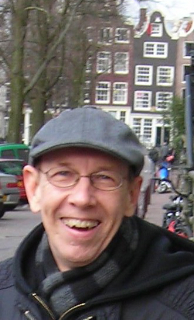In Fado music, the singer’s voice and command of the stage should cut the audience to the core. I don’t speak Portuguese, but when these elements are in place, I feel like I understand the meaning of the words being sung at the deepest level. The most powerful performers, such as Amalia Rodrigues and Cristina Branco, have a way of connecting with people that is entirely visceral. Even the peroxide-topped Mariza, for all her populist appeal, can carry a song by dint of her searing voice and queenly aura.
Such is not the case, as far as it’s possible to tell from a single performance, with the Fado star Ana Moura. Moura was in town last weekend for a show at the Palace of Fine Arts as part of the San Francisco Jazz Festival’s Spring Season.
The singer is gorgeous of course, with long dark hair, high cheek bones, limpid eyes and a nimble figure. She looked beautiful in the two identically-shaped tight-fitting, floor length gowns she wore during the performance. But her voice is way to sweet for a Fado singer. She sounds like she’s singing about happy things rather than the bitter-sweetness inherent in the Fado-centric word “saudade”, which stands for longing for or missing someone or something in Portuguese.
Moura also lacks stage presence. She has an annoying habit of wiggling her little hips and shoulders up and down and from side to side. She also – inexplicably – spent half of Saturday night’s performance standing sideways to the audience and pitching her gaze slightly downwards as if concentrating hard on pocketing the black in a particularly crucial game of snooker. The singer has an undoubtedly lovely profile, but all of her energy got lost in the wings.

 At the weekend, I had my first exposure to shape note singing (also known as “sacred harp singing”) — an American a cappella singing tradition which took off in the mid-19th century in the church tradition.
At the weekend, I had my first exposure to shape note singing (also known as “sacred harp singing”) — an American a cappella singing tradition which took off in the mid-19th century in the church tradition. What other public radio station would allow one of it’s music programmers to create a show on the theme of yoga and singing whose playlist, over the course of an hour, veers between Handel’s “How Beautiful are the Feet” and “Head Crusher” by Megadeath?
What other public radio station would allow one of it’s music programmers to create a show on the theme of yoga and singing whose playlist, over the course of an hour, veers between Handel’s “How Beautiful are the Feet” and “Head Crusher” by Megadeath?
 No one expects opera singers to be able to dance. So when, as a director, you have performers who are capable of using their bodies in expressive ways, you should make the most of them.
No one expects opera singers to be able to dance. So when, as a director, you have performers who are capable of using their bodies in expressive ways, you should make the most of them. I don’t think I’ve ever described a work for the musical theatre as “adorable” before. But that’s the word I would most readily apply to
I don’t think I’ve ever described a work for the musical theatre as “adorable” before. But that’s the word I would most readily apply to  The Lark theatre in Larkspur is a gorgeous art deco movie house. But it’s no place to hear live music, especially of the unadorned vocal variety. The
The Lark theatre in Larkspur is a gorgeous art deco movie house. But it’s no place to hear live music, especially of the unadorned vocal variety. The  Last week, I spent four days working at a conference in Charlotte, North Carolina. I didn’t realize until I arrived what a hub the otherwise fairly nondescript town is for museums. The downtown area is tiny, but it plays home to many institutions including
Last week, I spent four days working at a conference in Charlotte, North Carolina. I didn’t realize until I arrived what a hub the otherwise fairly nondescript town is for museums. The downtown area is tiny, but it plays home to many institutions including 

 A singer friend of mine currently residing in Asia but normally based in Los Angeles, Titus Levi, forwarded me an email he received from the composer/pianist Gene Carl. Titus had asked Gene what makes writing for voice and chorus so tricky. Gene’s response was so thoughtful that I asked if I could publish his musings as a guest blog here at lies like truth. Gene generously agreed. Here’s what the composer has to say on the subject:
A singer friend of mine currently residing in Asia but normally based in Los Angeles, Titus Levi, forwarded me an email he received from the composer/pianist Gene Carl. Titus had asked Gene what makes writing for voice and chorus so tricky. Gene’s response was so thoughtful that I asked if I could publish his musings as a guest blog here at lies like truth. Gene generously agreed. Here’s what the composer has to say on the subject: Having complained about the snoozing audience at the Auerbach/Weilerstein gig a couple of nights ago, it was gratifying to see an audience wide awake and vociferously responsive at
Having complained about the snoozing audience at the Auerbach/Weilerstein gig a couple of nights ago, it was gratifying to see an audience wide awake and vociferously responsive at  Two things to share with you this morning:
Two things to share with you this morning: